When the Next-Gen is in the air….(Sony’s Secret Weapon)(UPDATED)
We all knew it would happen, especially with Sony getting all nostalgic with their PS evolution videos and so it has. Sony unveiled the PS4 yesterday amid many….oops, Sony unveiled everything about the PS4 but the main unit itself, probably saving it up for the E3 in June. But you know what guys? With the amount of excitement in the air right now, no one really cares how the unit itself looks, after all, it’s just plastic enclosing the next iteration of our most beloved gaming console. So let’s get right down to ALL that was said and done at the Big Sony New york conference.
What was revealed in terms of Hardware:
The controller
Firstly, let’s talk about the new DualShock 4 controller, which, while definitely being a significant departure , does not really fail to remind us a little of it’s predecessor, the DualShock 3. Here, take a look :
Whoa! Nice. A rundown of the New features:
- The analog sticks have been redesigned for a more comfortable grip, and the accuracy has been increased, such that the dead zone in the middle has been reduced.
- Ds4 connects with the Ps4 through Bluetooth 2.1+EDR technology
- ‘Enhanced’ Rumble Function
- New light Bar which corresponds with the Move motion capture interface. (So, Motion control).
- The LED array can also change colors according to the game characters, or to alert a player to important situations, for e.g. a flashing pattern when a character is near death.
- A 2 point capacitive Touchpad, with a ‘click’ function.
- No start and select buttons.
- New ‘share’ button-which allows players to broadcast their Gameplay in real-time. Players can upload pictures and videos to Facebook and/or to other social networks within seconds after pressing the “Share” button.
- A new ‘options’ button.
- Redesigned/Better L2/R2 buttons.
- An integrated Mono speaker, and a built-in speaker and headset jack.
The six-axis gyroscope/accelerometer stays for another bout. The controller can be charged even when the Console is switched off, and the new controller uses the Micro-usb port instead of the Mini-usb one. The New light bar is tracked by a new Eyetoy peripheral, one with dual cameras. It can see depth and can track the controllers in 3D Space. A headset will also be bundled with the PS4 and will plug into the controller itself. The Touchpad, if implemented properly, should be able to alleviate the pans of using analog sticks for navigation of UI in various console applications, most notably the browser(if not the whole GUI of the console itself).
Quotes from Sony worldwide Studios Head, Shuhei Yoshida:
On the Touchpad:
“Having a Touchpad or touch input we really wanted to do because, these days, all these devices have touch control. Instead of trying to replace buttons or sticks with touch we thought that some things cannot be done as well as they can with a Touchpad—like swiping or pinch-to-zoom. These functions are easier to do with Multi-touch.”
On the Triggers:
“It’s more concave and it has more play. On the DualShock 3 it’s hard to use L2 and R2 the analog way. It’s ‘press down’ or ‘not press’. But with the DualShock 4, you can do something in between”.
On the Analog sticks:
“It’s improved in terms of precision. The center area is more useable. When you try the games, you’ll notice you have better, more subtle control when you’re driving.”
New EyeToy Peripheral
The Dual camera’s can individually capture 1280×800 pixel RAW/YUV video at 30fps (and 640×480 at 120 fps, or 320×192 at 240 fps) each. The diagonal viewing angle is 85 degrees. The peripheral can recognize faces, the location of multiple players in a room and is well equipped to perceive depth. They are to be used with the new controllers(for their move functionality), but are also compatible with existing Move controllers. It also features 4 integrated microphones, for accurate detection of voice commands. The eye will be able to use one camera for video streaming, while still tracking players movements for the video game.
Hardware of the PS4:
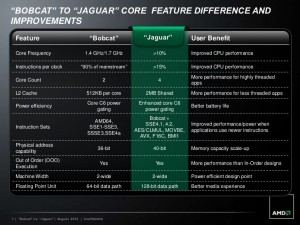
The CPU:
Also, the processor is bound to be custom-made as Jaguar APU’s, would typically be found in configurations maximizing at the quad-core level.
Quoting AMD’s Vice President of Global Communications and Industry Marketing John Taylor:
“At the most basic level, an APU is a single chip that combines general-purpose x86 central processing unit (CPU) cores with a graphics processing unit (GPU) and a variety of system elements, including memory controllers, specialized video decoders, display outputs, etc” he said. “Our semi-custom solutions take the same treasure trove of graphics; compute and Multi-media IP found in our APUs, and customize them for customers who have a very specific high-volume product that could benefit from AMD’s leading-edge technologies.”
The GPU and RAM:
A next-generation Radeon GPU comprised of 18 “compute units” capable of cranking out 1.84 Teraflops, is what’s present in the PS4. According to the Teraflops, the GPU seems to be something a little powerful than the existing HD 7850 GPU from AMD’s arsenal. Sony says that the GPU has 18 compute units. If these compute units are the same units used in the Radeon HD 7000 series cards(the latest series right now) then they translate to the GPU featuring a total of 1152 stream processors, 72 texture units and 18 ROPs. While these specs don’t seem to correspond to any specific card in AMD’s current GPU lineup(perhaps we might find something akin to this in the forthcoming HD 8000 series? It may be likely, considering the CPU used is also of an architecture which hasn’t debuted yet and will debut in Mid-2013. This chip will be backed by 8 GB of unified GDDR5 RAM (176 GB/s Bandwidth), in comparison, the PS3 had 25 GB/s of Bandwidth (XDR RAM), and typical Modern PC’s equipped with DDR3 RAM feature only about 60 GB/s of Bandwidth, so the PS4’s memory is blindingly fast. The major reason is that, it uses GDDR5 memory, which while being based on the conventional DDR3 platform, is used in GPU’s and so is tweaked to be pretty fast, which is pretty apparent here. The insane amount of RAM guarantees big and detailed textures @ 1080p. Although Sony has stated they won’t actively push for 3D games for the PS4, I believe, thus, that it will really be onto developers to support 3D in their games.
Other Specs
A built-in HDD, USB 3.0, A Blu-ray optical drive (which now supports speed of x6, PS3’s drive supported a speed of x2 only), Gigabit Ethernet, Wireless N standard compatible Wi-Fi chip (it really isn’t fair to demand the really new ac standard, not only did it not exist during the PS4’s development cycle, it still is very expensive and not at all economically feasible for the system) round out the other specs of the system. Also, looking at specs like the USB 3.0 ports, one can’t help but feel that maybe, just maybe, the chipset of the PS4 will be close to the ones currently AMD offers for it’s processors. If that is indeed the case, then the PS4 would probably support the SATA III(6.0 Gb/s) standard for connecting to the HDD, and if so, it would be a significant upgrade from the PS3,which only supported SATA I(1.5 Gb/s).
Also, it is confirmed that the PS4 will in fact be able to play used games.
Conjecture
Even though when it comes to consoles ,game developers are able to aggressively optimize their games for one specific hardware and thus extract seemingly magical performance from weak hardware, this time it seems the CPU is exceptionally weak. Sure, proprietary API’s and optimization can work wonders, but the Jaguar architecture is simply not a very capable one and I am willing to bet my money on the fact that in terms of game development, it isn’t much better than the Cell processor in the PS3 (Well, this would also depend on the APUs operating frequency, which hasn’t been unveiled yet, but I am willing to bite the bullet and hypothesize that it isn’t going to be much more than 3.2 Ghz). For this exact same reason, some are wondering whether the developers will be using the GPGPU capabilities of the PS4’s advanced GPU to perform some functions of the CPU and thus be able to alleviate the problem. But how exactly will the GPGPU capabilities of the GPU be exploited? And here is where my theory steps in. If you are even partially interested in the covert world of tech prophesies, please read on, because unlike some of the most crappy conspiracy theories out there , mine fits the bill perfectly.
First, Bear in mind these points:
- The PS4 employs GDDR5(in a pretty weird decision, as GDDR memory has never been used as the main system RAM before, so the decision has solely been made for exceptional speed, remember, they expressly wanted the maximum bandwidth for the CPU and the GPU) as it’s main unified memory, and is exceptionally fast @ 176 Gb/s (in comparison the NextBox’s been rumored to use the use the much slower DDR3 standard, peaking out at only 68 Gb/s)
- The CPU and GPU are on the same die, because PS4 utilizes a custom AMD APU. If you are unfamiliar with an APU, it is mainly a processor which has a GPU directly beside it on the die and thus the GPU is called an iGPU (integrated GPU).
- Sony curiously talked about how it’s leading the charge on development efficiency (remember this point).
- PS4 unites a rather large GPU as an iGPU, something that rivals a HD 7850 and is an iGPU? That’s unheard of (the best iGPU currently only rivals the rather puny HD 6670) This has been done deliberately as we will soon see).
Now, I said that I have a theory about how the GPGPU capabilities of the GPU will be levied in the PS4 and surprise, surprise, it’s through tech AMD has really been pioneering since the last few years (and companies like Samsung and QUALCOMM are onboard and the reason why the PS4 has the CPU and GPU by AMD ) and it is HSA. Heterogeneous System architecture, so you don’t know what that means. Here let me explain:
“The computing industry is approaching a formidable obstacle course where anyone wishing to drive advances in computing technology must carefully negotiate several key trade-offs. First, reducing power consumption is increasingly critical across all segments of computing. Consumers want improved battery life, size and weight for their laptops, tablets and smartphones. Likewise data center power demands and cooling costs continue to rise.”
“To navigate this complex set of requirements the computer industry needs a different approach – a more efficient approach to computer architecture. We need an approach that promises to deliver improvement across all 4 of these vectors: Power, Performance, Programmability and Portability.”
So basically, with the way things are moving, AMD has already realized that the process of shrinking nodes down and reaping the resultant benefits won’t last forever. Intel is already at 22nm and soon the industry is going to hit the problem of the quantum tunneling effect (At 4-5nm) so this process of shrinking nodes can’t last forever. The returns are diminishing and the costs rising. The development model is becoming exactly like what it shouldn’t be. We need a fresh approach to computing,one that is efficient and cost-effective. Enter HSA.
Basically, HSA is about finding a middle path between the complexities of programming in GPGPU languages(such as CUDA and OpenCL) for a GPU and the relative ease of programming for x86-64 CPU’s. So basically to exploit the massive parallel power of a modern GPU without the horrors of coding solely in complex GPGPU languages because it is financially undesirable (more so when it comes to game development). And this is the point people are missing right now. Why would Sony save Devs from the horror of coding the cell, only to make the problem much worse, i.e. GPGPU coding? Without some other trick to make it easy of course. And that ‘trick’ is HSA.
What is “HSA”?
- HSA is a short term for “Heterogenuous Systems Architecture”. It is not something that is easy to describe because it is sort of both a software and a hardware thing.
- How AMD describes HSA: The Heterogeneous System Architecture (HSA) provides a unified view of fundamental computing elements. HSA allows a programmer to write applications that seamlessly integrate CPUs (called latency compute units) with GPUs (called throughput compute units), while benefiting from the best attributes of each.
- HSA is an integration that creates a compromise between traditional CPU-based coding and GPGPU coding. Traditional CPU coding (i.e. x86, C++, etc) is easier, less costly, and less time consuming while GPGPU coding is far more efficient but it is not common because it is limited, more difficult, costly and time consuming. HSA is a combination of both. Its application is a variant of GPGPU (general purpose GPU) processing in which some functions of applications are coded to take advantage of the better performance & power efficiency that the GPU can provide in some scenarios, but it retains the ease and flexibility of coding for the traditional CPU.
- HSA is a totally different and new direction because AMD may be the first processor company to have made such significant investment primarily to improve ease of programming.
The reason why AMD is the only company who seems to have a product ready for HSA is because they designed their APUs to culminate at this (read on to find out why the APUs have been designed the way they have been). Now It makes sense why Sony opted for an APU, doesn’t it? And why the said APU was customized to include a much bigger GPU as an iGPU than even the best current commercial APU has. Let’s read a little more to make things clearer :
“Today, a growing number of mainstream applications require the high performance and power efficiency achievable only through such highly parallel computation. But current CPUs and GPUs have been designed as separate processing elements and do not work together efficiently – and are cumbersome to program. Each has a separate memory space, requiring an application to explicitly copy data from CPU to GPU and then back again.
A program running on the CPU queues work for the GPU using system calls through a device driver stack managed by a completely separate scheduler. This introduces significant dispatch latency with overhead that makes the process worthwhile only when the application requires a very large amount of parallel computation. Further, if a program running on the GPU wants to directly generate work-items, either for itself or for the CPU, it is impossible today!”
The purpose of HSA is to seamlessly share data between CPU and GPU, without memory copies or cache flushes because it assigns each part of the workload to the most appropriate processor with minimal dispatch overhead. The resulting performance is not possible using only Multicore CPU, only GPU, or even combined CPU and GPU with today’s driver model. Just as important, it is done using simple extensions to C++, not a totally different programming model.A middle path.
- As mentioned, one of the key points that can be made from HSA is that optimization for HSA is going to be easy to code – this is because of the hardware optimizations AMD can make in their APUs. Traditional programming for OpenCL and CUDA to enable apps to take advantage of the GPU has provided the same kind of benefits HSA will provide for quite awhile, but coding to take advantage of OpenCL and CUDA is difficult, time-consuming, and costly.
- Coding for HSA optimization will be almost as easy and as quick as coding traditionally while giving the same performance and efficiency provided by the more complex GPGPU coding methods available today. This means that HSA can be easily adopted by developers.
The above points explains why Sony stressed so much on how it is achieving development efficiency (this would not have been possible without HSA, as using GPGPU solely would be too cumbersome for game development, the budgets would skyrocket.).
Now, why use GDDR5 as the main system memory? Clearly, GDDR RAMs have been designed from the start to be used only as V-RAMs. This may be why :
- AMD has exclusivity because HSA requires a specific level of integration that AMD has been preparing by designing its APUs a certain way. Intel’s “APUs” do not follow the same design principles.
- For example: the average user might notice that the Llano and Trinity APUs are very bandwidth intensive and require fast RAM to get better performance.
- This is actually because on AMD APUs, CPU & GPU communication is done via main memory. Llano and Trinity APUs accomplish a partial integration of this and the Kaveri APU which introduces HSA will feature true address-space sharing between CPU & GPU to enable HSA.
We know the APU in PS4 is a Richland one, the predecessor of the forthcoming Kaveri APU, the latter will enable full blown HSA in the PC space. But we also know that the APU in the PS4 is a highly customized one, is this what Sony and AMD have been cooking up? Even if this customization is not present, even then the Richland APUs have partial implementation of HSA. Now we also know why memory bandwidth is very important in such implementation, from the above bullet points.
This explains why the PS4 uses extremely fast (176 Gb/s) GDDR5 memory as unified(needed for HSA) memory for the system. How fast is it really? About 7 times than the bandwidth found in the PS3 and about 3 times than the bandwidth found in modern PC’s equipped with DDR3 RAM. I think in the PS4, the cpu and the iGPU share the address space.
HSA provides exactly the kind of benefits consoles needed for this gen, as consoles have to provide a generational leap In power without breaking the bank and keep game development costs in check, so efficiency of development process is needed.
- Technology access is cheaper for everyone (Since performance does not require expensive parts)-Cheap
- Lowered cost of software In addition to hardware, game development budgets don’t sky rocket, exactly what Sony has been masquerading about (and what simple implementation of GPGPU CANNOT PROVIDE).
- PCs/CONSOLES worldwide will be providing the same performance while using less power- Power efficiency.
Now we have seen why :
- Sony chose GDDR5 as the main unified RAM
- Chose to go with a custom AMD APU, the only product which can currently enable HSA.
- Why it talked so much about game development efficiency on the new York conference, instead of bragging about PS4’s hardware power, as is customary for consoles PR.
The reason is: PS4 might be implementing HSA (calling it).
This again bodes extremely well for PC gamers, well at least for those with AMD APUs. Similar to how people speculate that due to these next gen systems having CPUs similar to PC one’s, we might see PC ports being more optimized and using more CPU cores, we also might see game developers utilizing HSA on AMD APUs on the PC side of things. If this is indeed the case, then this is a significant win for AMD and it’s customers, and we all know how badly both needed one ( Bulldozer- I’m looking at you). HSA also offsets AMD’s performance processors woes with FPU’s, as in they currently suck at it. BUT, GPUs are good at calculations regarding FPU’s, actually VERY GOOD, like TERA FLOPS GOOD. This means that AMD will sometime in the future convert it’s CPU line-up to a pure , APU one (since these are the CPUs that levy the benefit of GPUs FPU processing capabilities and other capabilities too), the current flagship line up will cease to exist, sometime in the future (I think the excavator line-up will be the first line up consisting purely of APUs, but that’s another can of worms).
AMD’s Announcement at GDC, related?
AMD’s HSA implementation is huge in terms of the performance benefit it brings, but how could AMD convince game developers to port games with such optimization on the PC? Considering gamers predominantly use Intel Hardware, developers would surely find it hard to justify such an investment. But what if the games were made to run on the tech in the first place, such that hardly any more investment has to be made for the PC? See AMD guys are really smart. Considering the NextBox has also been rumored to use AMD tech, they are also probably using HSA (they will have to, if they want to remain competitive with the PS4) so games, before being ported over to the PC, will already be running on x86-64 CPUs, similar modern GPUs and HSA! What is there to even ‘port’ now? Just some optimizations have to be made. So, on the PC side of things, AMD APUs will become the game developers choice of hardware (since porting games to their APUs will be the easiest for them), and gamers choice of hardware too (and Intel will surely be overshadowed but they will remain there). In light of these facts, the following lines by John Taylor, AMD’s Vice President of Global Communications and Industry Marketing,start making real sense :
“This is going to be a very exciting year for gamers, especially for those with AMD hardware in their PCs and consoles, as we have even more game-changing (pun intended) announcements still to come,” he said. “Look for some more exciting things happening at the Game Developers Conference (GDC) in March when we will provide even more info on how we are working with game developers to make AMD the hardware of choice for running the best games!”
Considering the industry’s perception and performance of AMD’s PC hardware right now (excluding their GPUs),they can hardly be considered the hardware of choice for gamers. The only way such a stark difference can be brought along, the only way the tables can be turned, is through HSA and the resulting optimizations their hardware will get on the PC (again, calling it). It can also be something entirely unrelated, but I hope it is this.
HSA is quite possibly Sony’s secret weapon, and possibly maybe Microsoft’s (and AMD’s saviour).
MORE PROOF:Guys,this is just in and it is crazy,YO!!,AMD PLANS TO SELL A VERSION OF THE PS4 APU TO PC BUILDERS.How is that related to my theory,i hear thee ask?This is how:
SO get a load of what AMD’s head of marketing for Global Business Units,John Taylor,has told the inquirer:
“Everything that Sony has shared in that single chip is AMD [intellectual property], but we have not built an APU quite like that for anyone else in the market. It is by far the most powerful APU we have built to date, it leverages [intellectual property] that you will find in our A-series APUs later this year, our new generation of APUs but none that will quite be to that level of sheer number of cores, sheer number of teraflops.”
If you have already realized what the above means,you already are congratulating me…(because i was right),but if not,then let me explain!!
So,i had hypothesized that the APU in the PS4 sported HSA implementations which will be found in AMD’s upcoming APU’s,which will debut later this year. Now according to the above quote,where John is talking about the PS4’s APU,he says all the usual stuff about how it is the biggest and baddest APU ever made,but he also says and i quote:
“it leverages [intellectual property] that you will find in our A-series APUs later this year, our new generation of APUs but none that will quite be to that level of sheer number of cores, sheer number of teraflops.”
SO,He is effectively saying that the PS4’s APU leverages ‘tech’ from their upcoming APU’s(which will debut later this year),but the upcoming APU’s won’t be better in performance.Now what APU’s are debuting later this year?Well 2 are: Richland in the first Half and Kaveri in the second.Now,judging by how John says ‘later this year’,he is obviosuly referring to the Kaveri APU’s…AND WHAT NEW TECH DOES THE KAVERI HAVE THAT THIS PS4 APU MAY BE(I AM ALMOST A 100 PERCENT SURE HERE) ‘LEVERAGING’?TECH TO ENABLE HSA!!
and just as a consolation,think about why BOTH sony AND microsoft left Nvidia for none other than an AMD APU(the microsoft part isn’t confirmed yet,but i digress)…none of them want to miss out on the HOT HSA action..
Driving the POINT home.Over and out.

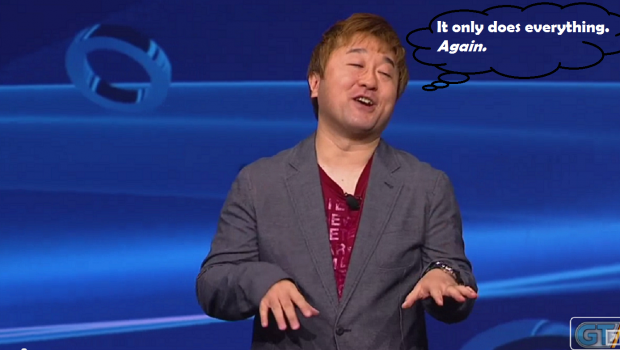
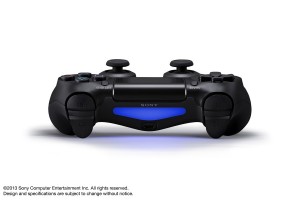
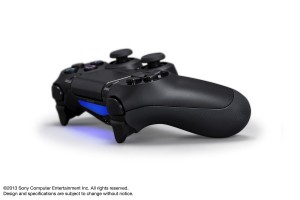
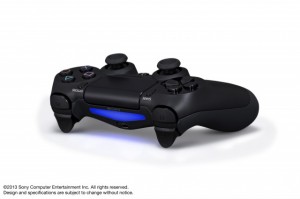

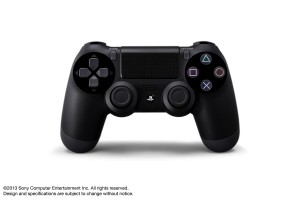
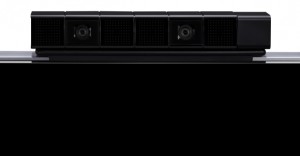
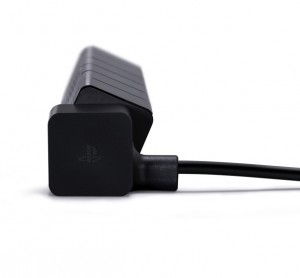





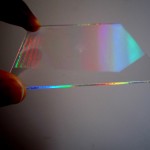








Pingback: PlayStation 4 - News, Rumors & Speculations - Page 7
Pingback: Yoshida: PS4 Version of Multiplatform Games Must Be Considered the Best | Techno FAQ